





Across the working landscapes of Saskatchewan, the wetlands and grasslands needed by wildlife are owned and sustainably managed by ranchers like you.
As beef producers, you protect our province’s most important natural areas. Ducks Unlimited Canada (DUC) understands that a prosperous beef industry is central to healthy land, vibrant rural communities and abundant wildlife populations. We offer farmgate conservation programs designed to support your stewardship efforts and put money back in your pocket.
Z Need more livestock feed? DUC’s Forage Program pays $100/acre for field-scale conversion to perennial forage. Additional program incentives could take that to $200/acre.
Z Have land with water and grass? DUC’s Rangeland Program pays up to $5,000 to protect grasslands and existing wetlands for a 10-year term.
Z Conservation Easements (CEs) protect your land’s natural values in perpetuity, pay up to 35% of current land values, and have no restrictions on haying or grazing.
Z DUC’s Revolving Lands Program (RLP) can be a cost-effective option to expand your land holdings. RLP lands have been restored to tame grassland; since a CE is a condition of purchase, these lands sell for slightly below fair market value. There are no restrictions on haying or grazing.

To stay competitive and profitable, you are challenged to look at both sides of the equation –the day-to-day costs, trends, and influences on your bottom line, as well as the key operational considerations. From minimizing your tax exposure to optimizing your operations, we’re here to help you get the most from your livestock operation.


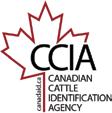

A Saskatchewan Stock Growers Association (SSGA) Publication
General Manager: Chad MacPherson
Box 4752, Evraz Place, Regina, SK S4P 3Y4
Tel: 306-757-8523 Fax: 306-569-8799
Email: gm@skstockgrowers.com
Website: www.skstockgrowers.com
Managing Editor: Kori Maki-Adair Tel: 403-680-5239 Email: kmaa@shaw.ca
Agri-business Advertising Sales: Diane Sawatzky Tel: 306-716-4271 Email: sales@skstockgrowers.com
Livestock Advertising Sales: Stephanie Kot Tel: 306-861-4348 Email: livestocksales@skstockgrowers.com
Subscriptions
Box 4752, Evraz Place, Regina, SK S4P 3Y4
Tel: 306-757-8523 Fax: 306-569-8799
Email: office@skstockgrowers.com
Subscription Rate: One year $26.50 (GST included) Published five times per year
Design and Layout: Jackson Designs | Candace Schwartz Tel: 306-772-0376 Email: candace@jacksondesigns.ca
Prairie Conservation Action Plan (PCAP)
Manager: Carolyn Gaudet
Box 4752, Evraz Place, Regina, SK S4P 3Y4
Tel: 306-352-0472 Fax: 306-569-8799
Email: pcap@sasktel.net
SSGA reserves the right to refuse advertising and edit manuscripts. Contents of Beef Business may be reproduced with written permission obtained from SSGA's General Manager, and with proper credit given to Saskatchewan Stock Growers Association. Articles submitted may not be the opinion of SSGA. SSGA assumes no responsibility for any actions or decisions taken by any reader from this publication based on any and all information provided.
Publications Mail Agreement #40011906
Return undeliverable Canadian addresses (covers only) to:
Saskatchewan Stock Growers Association Box 4752,
Place, Regina, SK S4P 3Y4
• Kori Maki-Adair
• Dr. Tammy Nemeth
• Jason Pollock
Livestock beneficial management practices data has been released from the Farm Management Survey, a collaborative project between Statistics Canada and Agriculture and Agri-Food Canada.
One of the practices examined was the time spent grazing during winter and summer. Perhaps unsurprisingly, less than half (42 per cent) of Saskatchewan beef producers reported summer (April to October) grazing in 2021, down from 81 per cent in 2017.
With less-than-ideal grazing conditions, the average number of weeks of summer grazing without supplemental feed in 2021 was down to 19.55 compared to 22.72 in 2017. Conversely, the average number of weeks of summer grazing with supplemental feed being brought on site increased to 12.57 from 10.33.
Winter (November to March) grazing was reported by 70 per cent of beef producers in 2021, down from 76 per cent in 2017. Both the average number of weeks of grazing with and without supplemental feed decreased from 2017 to 2021.
The highest percentage (over 11 per cent) was producers having their livestock in an
open field or pasture and relying mostly on feed brought on site. Again, poor crops made for less residue—or had already been used for summer grazing.
In 2021, the number-one type of feed was “residues or aftermath growth from harvested field crops” at 58 per cent, up from 32 per cent in 2017.
For almost one quarter (24 per cent) of producers, the number-two feed type was “other standing dormant vegetation,” up from 19 per cent in 2017.
Seventeen per cent of producers reported using both “standing corn” or “swathed, cut, or windrowed crops,” in 2021, up from 13 and 11 per cent in 2017, respectively.
The number-one type of vegetation for winter grazing was “processed hay, silage, or straw fed on the ground in a windrow or pile” at 54 per cent, up from 45 per cent in 2017.
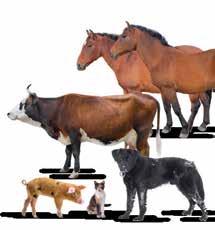
For 47 per cent of beef producers, “grain or other supplements” was the secondmost common type, up from 33 per cent in 2017.
“Bales of hay or straw” came next, either unrolled (44 per cent) or whole (42 per cent).
The least common type was “processed hay, silage or straw fed in a trough” at 24 per cent; though, that was up from 10 per cent in 2017; arguably, the price of hay may have contributed to more protective feeding.
The most common practice, at 39 per cent, was to provide feed several times in the same location and then move to a different location. One-third of beef producers said they provided feed only once in the same location, always moving to a new location. Only 17 per cent indicated that feed was provided in the same location for the entire winter-feeding season.
While 70 per cent of beef producers indicated they used practices to move livestock around with winter grazing, only 42 per cent did the same with summer grazing. The number-one practice used in summer was the strategic placement of salt, minerals, and water sources (71 per cent).
Following closely behind, at 68 per cent, was moving the cattle to different areas within a large field. Over 40 per cent of beef producers used mobile electric fencing or used shade and shelter to move the livestock around in the summer. The use of all these practices was higher than they were in 2017.
The survey is conducted every five years and uses a sample selected to be representative of 81 per cent of Canada’s production of each of the sectors it surveys.
On April 16th, Deputy Prime Minister and Minister of Finance Chrystia Freeland presented Budget 2024, which included a list of federal tax-related measures designed to increase housing supply, manage inflation and boost the economy.
There were also capital-gains tax implications, and here is how those changes could impact succession planning, which may be of interest to families in the ag business.
The first change is a tax measure that proposes an increase from one-half to two-thirds in the taxable portion of capital gains in a given year (i.e., on a financial gain made after buying and then selling a capital expense like a property or an investment).
While the original rate of one-half would still apply to capital gains up to $250,000 in relation to personal taxes, the increased rate of two-thirds would apply to gains that exceed $250,000 in relation to individuals, corporations and trusts.
What will be considered good news to some succession planners is an increase in the lifetime capital-gains exemption to $1.25 million for the sale of farming property and small business shares (e.g., shares arranged for beneficiaries of an estate). The federal announcement also indicated this exemption would be adjusted for the effects of inflation as early as 2026.
So, if you are already implementing your succession plans, or are in the midst of drafting them, be aware that June 25, 2024, is the date these changes will take
effect. Either way, you may need to have some frank conversations ahead of that date, in order to make the necessary adjustments to your calculations and schedules.
Are you ready to retire and sell by June 25th? Are your successors ready to take it all on and buy you out by then?
Developing the answers to these complex questions is the same as crafting a successful business continuity plan, which requires interdependent risk-based research and discussion. Seeking out professional guidance from experienced professionals in the areas of business and personal accounting, legal consulting and tax services would be considered a sound investment.
Assessing personal and business needs and risks, as well as creating preparedness for, response to, and recovery from uncontrollable, unplanned personal and professional life emergencies and day-to-day events will likely be required.
REFERENCE
Government of Canada
Budget 2024
Fairness for every generation
https://budget.canada.ca/2024/homeaccueil-en.html
MNP
2024 Federal Budget Highlights
https://www.mnp.ca/en/insights/ directory/2024-federal-budgethighlights?utm_medium=email&utm_ source=send&utm_campaign=tax_ budget_ca&utm_content=--taxs#
We are seeking an Accounting/Office Administrator to join our team. The ideal candidate will enjoy working in a small office, maintaining accounting records as well as managing programs, events and services for all aspects of the Association. For more information: https://skstockgrowers.com/were-hiring-accounting-office-administrator/


For more than 50 years, Pneu-Dart has offered the best remote injection equipment for your drug delivery needs.
Our Remote Drug Delivery (RDD) systems are designed to capture or medicate while minimizing stress on animals. Whether you're treating freerange cattle, sedating cervid livestock, or assisting in the translocation of wild animals, Pneu-Dart manufactures the products to handle every target situation.
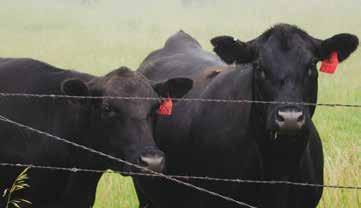





Cattle producers deal with their fair share of unknowns. Record-high prices come with high risk. The Livestock Price Insurance Program (LPI) offers producers the ability to ensure profitability in unpredictable markets. Saskatchewan producers can now connect with Saskatchewan Crop Insurance Corporation (SCIC) to enroll and discuss the details of this Program.
Answering one of the frequently asked questions: Why wouldn’t you take advantage of this program? Markets are destined to rise and fall. Get protection from unexpected cattle market price drops with LPI.
The Program creates an opportunity to purchase forward-market price coverage on hogs, calves, feeder and fed cattle. It allows producers to establish a floor price in the market to guard against unexpected market declines over a defined period.
When livestock are sold, if the market price has dropped below the insured coverage price, producers can claim the difference. If livestock sell for higher than the floor price producers do not have a claim but are financially better off.
The program is designed to be responsive to Canadian market conditions. Producers can hold more than one policy at a time to match their coverage needs. Policies with different expiration dates may help to mitigate risk. Calf policies are available February through June. Feeder and fed policies are available year-round.
How producers get started with LPI:
1. Enroll. Producers can call their local SCIC office or complete the enrolment forms on www.lpi.ca. Enrolling has no obligation to purchase a policy.
2. Register for weekly price/ settlement emails. Becoming
familiar with the premium tables and how they fluctuate day-to-day assists producers in their purchasing decisions. Settlement emails are sent to producers every Monday, whereas producers can purchase from premium tables provided weekly on Tuesdays, Wednesdays and Thursdays.
3. Review and purchase an LPI policy. Producers can learn how premium tables are calculated and how data is collected when establishing settlement values at www.LPI.ca/about . Producers can access various resources at www.lpi.ca. Resources include market information, program guides, cost of production sheets, Canfax breakeven calculators and price projections online.
The LPI policy workpad helps determine which policy is best for a producer’s operation with a side-by-side comparison of three options. SCIC recommends reviewing the LPI Buyer’s Guide at www.scic.ca, which explains how to use the program to its full potential.

Since LPI is a market-driven program, it considers three areas of risk specific to livestock producers: price, currency and basis risk.
Many market-driven factors impact price fluctuations. LPI protects producers against market volatility, enabling them to manage their operations more effectively.
There is always risk when it comes to markets. When the dust settles, producers can look to LPI as an option for reducing their exposure to market declines.
For more information, visit www.lpi.ca or contact a local SCIC office.
On February 23, 2023, the United States Department of Agriculture (USDA) notified Canadian Food Inspection Agency (CFIA) that a heifer exported from Saskatchewan to a feedlot in Nebraska in September 2022, had tested positive for bovine tuberculosis (TB) at slaughter.
CFIA utilized animal movement records to determine:
• The heifer’s herd of origin, which they quarantined until testing could be completed.
• The heifer had not been on any other farm premises in Canada
• The heifer spent five months in a Canadian feedlot before being exported.
• All of the Canadian feedlot contact animals were destined for slaughter.
In May 2023, CFIA tested all animals over the age of six months, and removed the reactor animals for slaughter and enhanced post-mortem examination, which confirmed two initial positive cases in the herd on June 19, 2023.
Investigation Status as of April 16, 2024
• One infected herd has been humanely depopulated and all testing is complete.
• There were 32 confirmed positive cases of bovine TB in that herd in total.
• The bovine TB strain found in the infected herd is consistent with the strain the USDA found in the infected heifer at the US feedlot; and it is not a close match to any strain previously reported in livestock or wildlife in North America.
Life Line Herds (i.e., herds traced from an infected animal in the infected herd)
• CFIA has released the single life line herd from quarantine.
Contact herds (i.e., herds that shared a fence line or may have co-mingled with the infected herd)
• CFIA has released the single contact herd from quarantine.
Trace-in Herds (i.e., herds that provided animals to the infected herd)
• CFIA has released the two trace-in herds from quarantine. All testing of trace-in herds is complete.
Trace-out Herds (i.e., herds that received animals from the infected herd)
• CFIA has completed herd-level testing on five trace-out herds and released them from quarantine.
continued on page 10

If a trace-out animal is found in a It will be isolated It will be destroyed by slaughter It will undergo a post-mortem inspection
Terminal Feedlot where animals only go to slaughter
Yes
Non-terminal Feedlot where it may be in contact with breeding stock Yes
• CFIA is continuing tracing work.
For trace-out animals found on nonterminal feedlots, an assessment of the disease risk status of other animals at the same premises will be completed, and live animal testing will be performed as needed.
If required, tissues collected from animals at terminal and non-terminal feedlots will be sent for laboratory testing.
The goal of CFIA’s program is the early detection and complete eradication of bovine TB from livestock in Canada.
Canadian Food Inspection Agency
• Industry Notice - Detection of bovine tuberculosis in Saskatchewan
Yes Yes
Yes, if the animal is mature enough; or it will be humanely destroyed.
Yes
https://inspection.canada.ca/animalhealth/terrestrial-animals/diseases/ reportable/bovine-tuberculosis/ saskatchewan-2023/detection/ eng/1687969580006/1687969846737
• Status of the bovine tuberculosis investigation status as of April 16, 2024 https://inspection.canada.ca/animalhealth/terrestrial-animals/diseases/ reportable/bovine-tuberculosis/ saskatchewan-2023/status/ eng/1689254193235/1689254193704
• What to expect if your farm is part of the investigation for bovine tuberculosis
https://inspection.canada.ca/animalhealth/terrestrial-animals/diseases/ reportable/bovine-tuberculosis/ farm-under-investigation/ eng/1449456995596/1449456996360
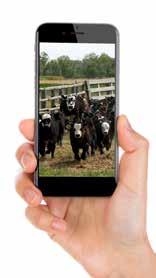
• Email your photos to gm@skstockgrowers.com with the subject line: Photo Contest
• Include your name, mailing address and the location the image was taken
• Please insure the photo is high resolution and clear quality for full page printing (300 dpi)
your camera to HIGH QUALITY and start tapping!
Bovine TB is a reportable disease.
Any suspect cases must be reported to Canadian Food Inspection Agency.
It is most commonly spread through:
• Contact with infected animals' respiratory secretions and aerosols, feces, milk, urine, vaginal secretions, or semen; and
• Ingestion of contaminated food and water.
Progressive signs of disease:
• Weakness,
• Loss of appetite,
• Weight-loss,
• Fluctuating fever,
• Intermittent cough, and/or
• Lesions in the lymph nodes of the head and thorax, lung, spleen and liver.
While all investigations and response situations are different, the steps involved in a bovine TB investigation or response normally include:
• quarantine
• investigation
• destruction and disposal
• cleaning and disinfection
• compensation
• confidentiality
This activity remains important to ensure prompt detection and eradication of the disease to prevent its establishment and spread.
- Canadian Food Inspection Agency




Travis Hickey
If you missed him at the

Becky McCray
Opening Keynote from Oklahoma.
Becky is an author and cattle rancher -
she doesn't just talk about rural issues,
she lives them.

Saskatchewan Beef Industry Conference,
here is your chance. He is back for CBIC,
though he is hoping for less snow this time.
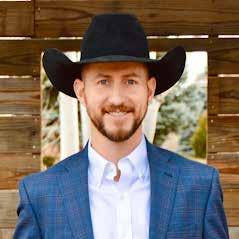

Canadian Food Inspection Agency (CFIA) has confirmed the presence of highly pathogenic avian influenza (HPAI) in Canada; however, it has not been detected in Canadian dairy cattle or any other Canadian livestock as of May 1. HPAI is a viral infection that typically affects birds (i.e., wild, pets, poultry); however, it can also be transmitted to other species of animals and humans.
While the United States Department of Agriculture (USDA) has detected HPAI in unpasteurized milk from infected U.S. dairy cattle in some parts of United States, the USDA has publicly stated there is no evidence to indicate that eating cooked poultry, poultry products, beef or beef products can transmit the virus to humans.
It is important to note, the pasteurization process of milk kills harmful bacteria, including HPAI, ensuring that milk is safe
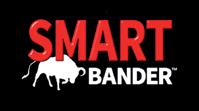 Kori Maki-Adair
Kori Maki-Adair
to drink. All evidence to date shows that thorough cooking will also kill the virus. Of course, hand washing, and keeping protein products separate from other food products to avoid cross contamination during storage or cooking, are vital best practices.
This means that HPAI is not a food-safety concern and the risk of transmission to humans is low; and while the Government of Canada states there have been no impacts to the trade of live cattle or cattle products so far, they do consider HPAI to be a threat to the poultry industry, animal health, human health, trade and the world economy.
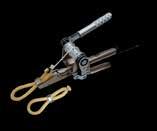



In addition to working with the veterinary community, industry, public health authorities, as well as the provinces and territories to coordinate a national response, CFIA is continuing to uphold its responsibility as Canada’s leading authority on HPAI, by providing scientific guidance, diagnostic assistance and communication updates— internationally and domestically—when new information is available.

"The bottom line is that high-tension banding is faster, easier, and less traumatic for the animal than surgical castration. "
 Matt Sween, UC Davis Animal Science Dept.
Matt Sween, UC Davis Animal Science Dept.
Like the name suggests, avian influenza is a virus known to affect birds (most commonly), and to spread rapidly amongst them, resulting in high mortality rates. Though authorities are uncertain, they suspect that wild birds may have introduced the virus to other species, but they are unsure how that occurred; and while HPAI poses a significant health risk in birds, other
species appear to recover after a period of illness.
For example, cattle display milder signs of the virus, and it seems that only a small number of other animals may be affected in a herd, rather than all members of the herd; and when cattle become sick, they tend to recover within seven to 21 days. So far, HPAI has not caused the death of any cattle.
While we may never know how this bird virus was transmitted to other species, including humans, CFIA has publicly stated that enhanced biosecurity measures are required to help prevent further contagion, which includes reviewing on-farm biosecurity plans to ensure robustness, and ensuring they are implemented as a continuous cycle of routine activities.
What needs to be done in terms of biosecurity measures tends to be unique for each situation. Identifying, assessing and developing a plan to address known and emerging risk is key; as is taking action to implement those plans; and of course, monitoring and keeping records of animal health and pest information to inform and support the continuous cycle of biosecurity-related activities. Is there a history of sick or dead wild birds on the property?
How does HPAI manifest in affected cattle?
The USDA has reported the clinical signs of HPAI in affected dairy cows to include reduced milk production; thicker consistency milk (similar to colostrum) or milk that may have visible solids in it; a decrease in feed consumption; and dry manure, constipation and/or diarrhea.
Since beef producers tend not to milk their cows, the opportunity to assess milk production and consistency would be unlikely; so, keeping a close watch on feed consumption and manure may be the only signs that a producer would observe that could indicate an animal is infected.

To prevent the spread of HPAI, CFIA advises livestock operators to do the following:
• Continually monitor cattle for signs of the virus;
• Contact a veterinarian or the nearest CFIA Animal Health Office for any suspected cases (i.e., to determine if further action is needed);
• Report dead wildlife to Canadian Wildlife Health Cooperative;
• Isolate sick animals and new animals (i.e., before incorporating them into the rest of the operation);
• Minimize contact with wild birds;
• Regularly inspect property and equipment, and clean up any loose feed;
• Regularly sanitize livestock enclosures, watering equipment and feeders;
• Change boots when entering barns;
• Limit visitors to livestock operations; and
• Stay informed.
Government of Canada
• Latest bird flu situation https://inspection.canada.ca/ animal-health/terrestrial-animals/ diseases/reportable/avianinfluenza/latest-bird-flu-situation/ eng/1651075538411/1651075538958
• Avian influenza (Bird Flu) https://inspection.canada.ca/ animal-health/terrestrial-animals/ diseases/reportable/avian-influenza/ eng/1323990856863/1323991018946
• Status of ongoing avian influenza by province
https://inspection.canada.ca/ animal-health/terrestrial-animals/ diseases/reportable/avian-influenza/ latest-bird-flu-situation/status-ofongoing-avian-influenza-response/ eng/1640207916497/1640207916934
• Highly pathogenic avian influenza in livestock
https://inspection.canada.ca/animalhealth/terrestrial-animals/diseases/ reportable/avian-influenza/latestbird-flu-situation/hpai-in-livestock/ eng/1711895796746/1711895797730
Province
11,030,500
This table lists the estimated number of birds in flocks impacted by HPAI, by province, as reported by Canadian Food Inspection Agency on April 10, 2024.





Is meat healthy?
If you mean, “is eating meat good for you,” then of course the answer is yes.
But is the meat sector healthy? With all the questions and challenges about nutrition, animal welfare, and the environment, do retail customers still view meat as an important part of their daily diet?
Also yes.
Anne-Marie Roerink of 210 Analytics LLC presented her 19th annual Power of Meat report to the Annual Meat Conference in Nashville earlier this spring. The conference is hosted by the Food Industry Association and the Meat Institute.
The report studied U.S. consumer attitudes and how they are reflected in retail sales of meat and poultry products for 2023. It is both broad, studying many different factors affecting meat sales; and deep, breaking down sales data by multiple demographic factors.
The consumer survey and the retail data show ongoing massive support for meat as part of a healthy diet.
A staggering 98.2 per cent of American households buy meat and poultry products, almost every week (48.4 times per year). The dollar value of those sales held steady over the previous year, while pound-for-pound sales dropped by 0.1 per cent.
This is a reassuring statistic for a sector that sees its reputation challenged over several different concerns from
environmental impact to nutritional value. Roerink says it is all the more positive because consumers aren’t eating meat simply out of habit—they believe it has a place in their regular diet.
“I think we don’t often do ourselves justice in the size of the category, how much people love meat and poultry,” Roerink said. “One of the main things I talked about is 75 per cent of shoppers agree that meat belongs in the diet.
“Belonging in the diet is a very high bar. That is not just an ‘is it okay to eat?’ kind of thing, but belonging,” she said.
While almost all households buy meat, Roerink’s data shows that roughly one in three consumers feel they should eat less of it. That still adds up to overwhelming consumer support for meat protein in a healthy diet, and she feels it represents an opportunity for the beef sector to share some good news.
“Regardless of what the headlines say in a lot of the consumer press, people do still eat meat and poultry, and they love it,” she said.
“I would say the significance is that about three in 10 consumers feel they should eat a little bit less of it for cost, health, animal welfare and planet reasons. And that’s where I think the meat industry needs to take a hard look.
“When we think about meat belonging in the diet, why aren’t we emphasizing that? Why aren’t we agreeing with consumers and underscoring the importance of nutrition and everything good that meat
and poultry brings? Or everything that’s been done to minimize the impact on the planet, and truly educate people on that so we take away the guilt and we can drive permissibility.”
The permissibility picture is still a hindrance. While consumer perceptions about animal welfare have improved— 55 per cent of those surveyed feel good about animal welfare practices, up from 43 per cent four years ago—only one in four are confident their grocery stores are committed to sourcing humanelyraised products.
Meanwhile, slightly less than half of respondents believe that animal agriculture does not negatively affect the environment.
These concerns don’t mean that people are turning away from meat; but they do show up as consumers who eat less meat, or who will have meat less often.
Roerink says the first question the survey asks, before the interviewee even knows that it’s a meat survey, is “describe your diet.” Are you a meat eater, flexitarian, vegetarian, vegan, pescatarian?
“What we saw hand-in-hand with the rise of plant-based meat alternatives [was] a bit of a decline in the number of people who considered themselves meat eaters. It was still sitting upwards of 75 per cent; so again, a lot of people still considered themselves meat eaters,” Roerink said.
“But as ‘alt-meat’ has peaked and declined, and is a tiny percentage of sales, we see a change in diet. I think that’s an
important thing.
“For a while there, we had lifestyle diets that were very restrictive,” she said. “It was no carbs, no gluten—very, very hard-to-follow diets. Those are all on the decline and it’s really more of a focus on balance, moderation, and including things that are good for you. Protein diets are still very big.”
Much has been made of a generational shift in food preferences, and the Power of Meat study bears that out. Two questions that appear side-by-side—”What is your all-time favourite meal?” and “What is your ultimate comfort food?”—show that tastes are changing.
Answering the first question, Boomers and their offspring in Gen X both listed steak and chicken as their first and second choices. Millennials chose chicken as their all-time favourite, with steak dropping to third choice.
But for Gen Z, steak dropped out of the top five altogether with chicken holding the second spot behind pasta.
All of which is not to say that meat is disappearing from their diets. To the second question, asking their ultimate comfort food, Gen Z placed burgers at the top of the list.
The challenge, Roerink says, is to understand how younger generations are preparing and serving their food and identifying a place for beef in those contexts.
During her presentation in Nashville, she asked the audience what their favourite meal is.
“And there were 2,400 people in the room, and the one word you heard—because I had them say it out loud—was ribeye,” she said.
“That’s a lot of steak.”
But with changing tastes, younger generations are less inclined to cook up a steak or a big roast and more likely to include meat or poultry as an ingredient in a dish like a stir-fry.
“If you look at the average time they prepare things, it is far, far less,” Roerink said. “The appliances they use are different, where they find their information or inspiration to cook is different.
“So I wouldn’t necessarily start with ‘beef is less relevant to a younger consumer,’ but they prepare it very differently and everything about it is different.”
In stores, that can mean different labelling or different cuts—strips for a beef stir-fry, or meat that has been marinated.
For labels, Roerink says “put down how many minutes it takes to prepare, because they’re looking for something that’s quick and easy rather than something that takes forever. Maybe it needs to be air fryer instructions versus oven instructions.”
The report also sees a generational shift in nutritional priorities as called out in labelling preferences. This holds an opportunity for meat, as younger generations—Gen Z and Millennials— are looking for protein and iron content in their foods. This compares with Gen X and Boomers, who watch labels to help them avoid undesirable components like fat, sodium and cholesterol.
And this is why Roerink says it’s important to understand the different buying, cooking and eating preferences of younger people. It’s still the Boomers buying the steaks and roasts, but there are new challenges and new opportunities with their grown children and grandchildren.
“We have to be rooted in the past because it is still a massive chunk of business that’s represented by Boomers,” she said. “But we also have to start looking more toward the future.”
Predictably, and especially in the recent inflationary climate, price drives consumers’ choices. This has not necessarily had a bad outcome for beef—while fresh beef volume sales are slightly down over 2022 levels, dollar sales are slightly higher. People continued to eat beef even as prices for everything rose dramatically.

Anne-Marie Roerink is a Principal at 210 Analytics, LLC—providing customized research and marketing strategies with a specialty in food retailing.
Prior to founding 210 Analytics, Anne-Marie was the Head of Research for the Food Marketing Institute.
Anne-Marie designs and authors the annual Power of Meat study and monthly performance reports, along with similar studies in produce, deli-prepared, frozen, bakery, candy and other categories.
But there was a measurable shift away from value-added products and niche services like meal kits delivered to the door. Consumers sought value by watching for specials and by buying cuts and ground meat to prepare at home.
“People are paying 32 to 35 per cent more for groceries now than they did pre-pandemic, and they’re not making 32 to 35 per cent more in their paycheque,” Roerink said. “So there is a lot more balancing of budgets happening.”
That doesn’t mean consumers are in a constant race to the bottom, or that beef is necessarily being cut out of the grocery purchase, she says.
“But you do see grinds coming on very, very strong. Every single grind is outperforming their specific species. Then you look at chicken that is
continued on page 18
Beef is Still Strong cont. from pg. 17
outperforming everything else.”
Supermarkets lost some meat sales to supercentre stores like Walmart, and to club stores like Costco. Restaurant and deli-prepared meals also declined as consumers opted to re-create restaurantquality meals at home.
This contributes to Roerink’s conclusion that the biggest driver of sales—and beef’s biggest advantage—is taste.
“I think one of the most important stats is actually the very last slide of the report,” she said. “And that is 92 per cent of people say something might be a great price, but if it doesn’t taste good, I’m not going to buy it again. Ninety-six per cent of people say ‘if I cooked a meal that was amazing, I’m going to cook it again.’”
She says over the past decade or so, the meat industry and every other food category has focused on nutrition, health
and production callouts—the science side of the product. When she included questions about great-tasting food on the survey, some of her colleagues wondered if there was value in asking such an obvious question. Of course, people will prefer great tasting food, right?
“I said, yeah, we all know that; but, none of us talk about it,” she said. “So the question stayed, and it just became this powerful thing. You’ve got to have the right price, the right promotion, the right packaging, the right channel, the right everything; and at the end of the day, it’s got to taste good.”
Roerink says there is more science on the production side than the consumer will ever know; but it’s hard to beat the consumer’s satisfaction of preparing and enjoying a great meal.
“That is an important thing to keep in mind,” she said. “The consistency of the amazing eating experience, and that is something where beef absolutely shines.”
Many of the factors behind beef’s retail performance are out of the producer’s hands. The rancher doesn’t have any control over prices, packaging, positioning or consumer trends. However, Roerink says providing that consistent, highquality product is one of two ways that producers can maintain beef’s high standing in the marketplace.
The other, she says, is sharing the good news about how beef is produced.
“I would say just driving permissibility among those folks that have a little bit of a guilty conscience over eating beef— in particular, relative to the planet, animal welfare, and is it healthy for me,” she said. “That’s really where the producer can make a world of difference by getting in on that conversation.
“If people love meat and feel good about eating meat, I think we’re going to have a very bright future.”
B
Meet cutting edge performance with the Massey Ferguson 1300 series mower conditioner. Rugged, cost efficient, and ready to work - this proven machine is the perfect match for your farm.
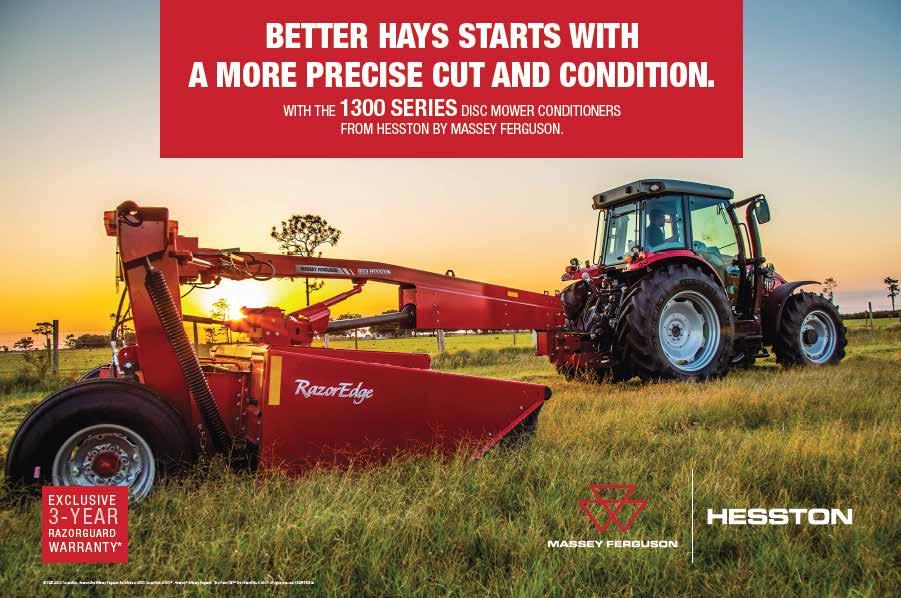


Over 500 exhibitors with products, services and opportunities for all types of farm operations

Demonstrations in crops, livestock, equipment, technology and more to see, touch and connect
SCAN THE CODE TO PLAN YOUR VISIT!
Download the Ag in Motion app for maps, event schedules and more.

Creating an experience where every member of your farm family can learn and grow 15 mins. NW of Saskatoon at Langham, Hwy. 16









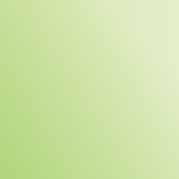


According to Agriculture and Agri-Food Canada (AAFC), at the end of March, 66 per cent of the country was classified as abnormally dry or in moderate to exceptional drought, including 82 per cent of the country’s agricultural landscape.
As a result, water insecurity across the country is continuing to affect feed costs and availability, which impacts the profitability of beef producers and feedlots—even though AAFC reports the majority of agricultural Saskatchewan received near-to above-normal precipitation last month.
Though the moisture somewhat improved drought conditions in most parts of the province, it was not enough to support those areas to recover fully from the longterm precipitation deficits.
And whether the rest of Saskatchewan’s soil receives the much-needed rain this summer ahead of harvest, or not, cattle supplies continue to be tight, pushing record-high prices at the consumer level.
Many producers and feedlots are continuing to face challenging times, so Beef Business reached out to Market Analyst Anne Wasko to share her expert analysis of the current situation and her projections for the 2024 cattle market.
Beef Business: Thank you for sharing your subject matter expertise with us, Anne. Your insight will support thousands of livestock producers to assess their business risk and make strategic decisions that optimize their profitability. Before we discuss your outlook for 2024, please set the scene for our readers by providing some context for your cattle market outlook .
Anne Wasko: Smaller beef cow herds and calf crops in North America are leading to smaller beef supplies. This has largely been due to widespread drought over
several years. Smaller cattle and beef supplies have, and will, lead to higher prices.
Beef Business: What have you observed in the cattle market since fall run 2023?
Anne Wasko: In Western Canada, feeder cattle this spring are testing the highs placed in September (average $330/cwt at 850 lb steers), lightweight cattle made new all-time highs in early March (average $438/cwt at 550 lb steers), fed cattle are presently making all-time highs at $258/cwt, and slaughter cows are presently at all-time highs of $180/cwt.
Beef Business: What is your market outlook for fall run 2024, and beyond?
Anne Wasko: 2023 was a transition year to higher cattle prices for this cycle with price gains over 2022 ranging from 30 to 44 per cent, depending on the class. For 2024 and beyond, a new price range is being established and gains will be smaller, i.e., four to eight per cent with more typical seasonality for the various cattle classes during the year.
Beef Business: Where do you see feed grain prices going? How will that impact calf prices? What are the factors affecting calf prices? How high do you think calf prices could go?
Anne Wasko: Weather will deal the biggest card in terms of North American feed prices. United States corn acres are expected to be smaller after a record harvest in 2023; so, yield will ultimately determine production. Presently, fall delivery barley prices in Southern Alberta are 10 to 12 per cent lower than last fall, meaning a lower cost of gain.
Cost of gain, exchange rate, available calf supply and feedlot margins all impact calf prices. If 2024 is a seasonal year, then calf prices will tend to be lower in the second

Anne Wasko has been a market analyst for more than 30 years, focusing on the Canadian cattle and beef industry. She is the market analyst for Gateway Livestock Exchange based in Taber, Alberta.
Anne makes numerous presentations to conferences across the country and United States. She is a regular contributor to RealAgriculture.com and RealAg radio on Sirius.
Prior to Gateway Livestock, Anne was the Senior Market Analyst for Canfax for 21 years.
Anne has presented her cattle market analysis at numerous Saskatchewan Stock Growers Association annual general meetings and conventions over the years, and she will be back this June to do the same.
Anne keeps her feet on the ground working alongside her husband at their ranch in Eastend, SK.
half of the year versus the first half.
Beef Business: When do you expect prices to peak on this round? How high can the market go?
Anne Wasko: Until United States producers start to retain heifers for breeding, it is difficult to determine when prices will peak. Presently, it is expected that 2024 to 2026 will be the top of this cycle, but weather remains a key factor.
Beef Business: In terms of steer versus heifer prices, do you see gap tightening due to supplies? Has the pricing gap gotten wider over time or is it a proportional relationship?
Anne Wasko: The ratio of steer to heifer calf prices remains mostly between 1.111.19 per cent (depending on the time of year), but certainly the actual price spread is wider simply due to the higher cattle prices today. The timing of the cattle cycle will also impact this relationship—when more heifers are diverted to the cow herd versus the feedlot, the ratio will narrow.
Beef Business: How do you think the Canadian dollar will influence prices?
Anne Wasko: As always, a weaker Canadian dollar supports Canadian cattle prices and vice versa. Last year, the dollar was rangebound between $0.73 to $0.76. So far this year, the dollar has been in a tight range of $0.73 to $0.74 for the most part. When and how interest rates move in Canada versus United States will play into the Canadian dollar trend.
Beef Business: What are your thoughts on demand for beef products?
Anne Wasko: Beef demand has been very strong in recent years (i.e., United States topped in 2021 and Canada in 2022). With smaller beef supplies over the next several years and higher beef prices, beef demand is expected to trend lower as well.
Beef Business: How will beef stack up against chicken and pork?
Anne Wasko: The value of other proteins, and the spread to higher beef prices, always plays into demand. The United States chicken production forecast of plus one per cent and pork production forecast of plus three per cent for 2024 will be limiting factors in beef demand.
Beef Business: What is your point of view on beef exports?
Anne Wasko: Logically, it makes sense that smaller beef production will lead to smaller exports, but the value of beef exports could still trend higher based on higher wholesale prices.
Beef Business: What are your thoughts on the impact of highly pathogenic avian influenza (HPAI) on the Canadian
beef industry? Do you have any concerns it will impact the markets in the long term?
Anne Wasko: There is so much unknown about HPAI still and the reactions around the world. These unknowns and uncertainties do cause volatility in cattle futures as do any “outside” events.
Beef Business: While the Alberta government continues to monitor snowpack, precipitation, river levels and other data points to support their understanding of the current drought conditions across the province, especially in the south, its website confirms their teams are currently in stage four of their five-stage water shortage management response plan.
How do you think this water insecurity will affect feedlots this year? Do you think water shortages for irrigation in Southern Alberta will impact calf prices in the fall?
Anne Wasko: Cattle prices are North American-based, as are feed prices. United States corn has moved north in times of tight feed supplies (e.g., drought). Impacted individuals will see production changes, but not the overall calf market. And how much timely rain comes will, of course, play into feed production as well.
Beef Business: Continued drought is encouraging many ranchers to downsize their herd due to a lack of grass and forage for grazing, resulting in another year of tighter cattle supplies, which complicates budgeting and business planning
for all members of the beef value chain through to retailers and consumers.
Your expert analysis of the 2024 cattle market, including the many complex factors affecting it, support a continued business mindset of risk-averse decision-making.
Thank you, Anne.
Agriculture and Agri-Food Canada Current Drought Conditions https://agriculture.canada.ca/en/ agricultural-production/weather/ canadian-drought-monitor/currentdrought-conditions



If you have a fence, you know the issues.
To build one, you need smooth ground free of densely-rooted plants, which means clearing the projected fence line (if it isn't already), pounding in posts, then attaching boards or wires.
Since building a fence is intended to increase livestock safety and keep the animals where you want them, monitoring and maintenance are critical—regularly surveying the line and taking action on any re-growth that could push it out of position, damage it or create security concerns that could result in costly, even prohibitive repairs.
At the end of March, 66 per cent of the country was classified as Abnormally Dry or in Moderate to Exceptional Drought , including 82 per cent of the country’s agricultural landscape. - Agriculture and Agri-Food Canada
You have to think ahead too, you may want to include portable sections that you can move when needed. Some ranchers do that as often as every few days to every few hours, depending on grazing methods in use.
Time, labour, materials and strategic planning are required for maintaining a good fence line and a productive pasture.
So, what if an option existed that still required careful planning, but much less time, labour and materials?
Well, one does. It’s an electronic virtual fence that’s solar-powered and wildlifefriendly. Saskatchewan Stock Growers Association is working together with a local producer, Saskatchewan Ministry of Agriculture and Canadian Forage & Grassland Association to conduct a pilot project in Canada assessing it.
The virtual fence company is Vence, based out of United States, and this is their first product testing in Canada.
The three-point goal for this fieldtechnology trial, funded by the province’s Strategic Field Program, is to determine whether a virtual fencing system will control animal movement to improve livestock distribution, reduce grazing pressure and reduce grazing costs.
In this time of abnormally dry conditions in some areas of the province, exceptional drought other areas, and water insecurity across the country, this project is likely relevant to all producers—not only those in the aspen parkland and boreal transition ecoregions, where many Saskatchewan beef producers utilize forested pasture as part of their summer grazing program.
Regardless of where you ranch, you may have noticed that cattle tend to prefer open areas along fence lines, trails and meadows— grazing those first, working their way into the bush after consuming the easily-available forage. And without a deterrent in place, cows will often return to overgraze the open areas and forest edges before those areas have sufficiently recovered, underutilizing the
internal portions of forested pasture.
This project was designed to address this need.
By controlling cattle movement and grazing behaviour using virtual fencing and programmable global positioning system (GPS) collars, this rigorous twoyear field demonstration is exploring the efficacy of new technology and tools that could build on our existing knowledge and systems for monitoring and managing livestock grazing.
Husband and wife cattle ranchers John and Deanne Chuiko own the livestock and property where this project is currently underway.
“We feel pretty fortunate,” John Chuiko said in a recent interview from his home in the rural municipality of Loon Lake next to the Bronson Provincial Forest. “Deanne and I feel blessed to have our family and

cattle on the same homestead that my grandparents settled in 1941.”
“It’s a space carved right out of the forest. We have a little bit of everything— sloughs, willows, tame pastures, rolling hills and thick forest,” Deanne added. “Our open land is gentle roll for the most part.”
“We are testing the technology within our grazing plan which includes 4,200 acres of owned/rented land and a 7,500-acre forestry lease. We manage our business using the Holistic Management framework with a strong emphasis on forage management, soil health and planned grazing,” with one starting and the other completing the sentence.
This project is well-suited to the Chuikos because they move their cattle around quite a bit with short grazing periods and long recovery. They try to mimic Mother Nature whenever they can.
John says decision-making that improves and restores the ecosystem function and builds biodiversity is very important to them, adding that they make their decisions based on what’s best for their people, land and finances.
John also says that he and Deanne, their son Matthew and daughter Rylee, are always open to learning. As a third generation ranching family, they agree the job of grazing management will help them do a better job yet.
Deanne says their approach of doing a good job of keeping an open mind and trying to make things better is working well for them, so when the project cooperators were looking for a host ranch to take on the pilot, they connected with Saskatchewan Stock Growers Association to learn more and get started.
Though supply chain issues delayed the project start date by two years, all of the materials arrived this spring and the Chuikos are now actively moving forward with the work as the test-site hosts, setting up the equipment and technology alongside the Saskatchewan Ministry of Agriculture project cooperators.
The Chuikos confirmed start-up has been a reasonably-sizeable task, though a straightforward one, and kindly supported one another’s explanation of how the system works.
John said they determined where the solar-powered radio base station would be placed by considering the terrain of their ranch to optimize the unit’s reach to cover the entire testing site.
Next, Deanne said they tested all of the collars to ensure they communicated with the radio base station before installing the collars on their cattle.
“As of now, we have installed collars on more than 400 animals. It was a big job that we completed over a two-day period, and we definitely got quicker at it,” Deanne reported. “Most cows gave a good few bucks coming out of the chute, but they were completely calmed down within minutes.”
John said, “It went well, though it took longer than we expected. The collar can’t be too tight or too loose. Time will tell us if we did this correctly.”
John described the collars as a simple chain-link necklace with a 4” x 6” paddle that contains a GPS transceiver, a radio frequency transceiver and a battery that will need to be changed out at some point.
John said, “Battery longevity depends on how often the base stations and collars are communicating—we are told to expect the battery to last around as nine months. Vence is constantly working at improving the collars and battery life. The technology is evolving very quickly.”
They are now familiarizing themselves with Vence’s HerdManager software, where they can program virtual boundaries, exclusion areas, and see present and past cattle movement.
“We have started the process of learning how to use the software to program the collars and change the virtual fencing boundaries. You can click and drag on the screen to assign the GPS coordinates
Continuous Grazing – Where animals are allowed to have unrestricted, uninterrupted access to a specific unit of land throughout the entire or part of the grazing season.
Rotational Grazing – A system developed by subdividing a large pasture into two or more smaller paddocks and grazing these paddocks in a planned sequence.
Strip Grazing – Utilizing a movable, electric fence to allot enough forage for a short time period and then moving the fence forward providing a new allocation of forage.
Mob Grazing – Grazing a large concentration of livestock in a small area for a short duration.
Creep Grazing – Enabling younger animals access to a pasture of higher quality forage through a creep gate.
Forward Grazing – Grazing two groups of livestock on a paddock, one following directly after the other.
Multi-species Grazing – Where different livestock species are grazed on the same pasture as one herd or using the forward grazing method.
to create the boundaries,” Deanne said and added, “We are very newly into the software. I think it’s going to be pretty interesting because we’re going to see where the cattle graze and where they are spending most of their time.”
John continued, “We can program the collars to guide the cattle to do more of what we want them to do. You don’t see where they go with a normal fencing system.”
Deanne said, “All of the technology is operating and communicating as it
continued on page 26
June 9 - 11, 2024
SUNDAY, JUNE 9
5:30 p.m. Registration
6:00 p.m. President’s Reception
Scotch Tasting & Trade Show
MONDAY,
8:00 a.m. Registration and Trade Show
9:00 a.m. Greetings and Welcome – Garner Deobald – President, SK Stock Growers Association
Address from Saskatchewan Agriculture - Honourable David Marit, Minister of Agriculture
Address from City of Swift Current
9:15 a.m. Shaping Sustainability Standards
Dr. Tammy Nemeth, Energy & ESG Analyst Strategic
10:00 a.m. Networking Break and Trade Show
10:30 a.m. Canadian Cattle Association Update
11:15 a.m. NCBA Update
Kent Bacus – Executive Director Government Relations, NCBA
12:00 p.m. Lunch and Trade Show
1:00 p.m Beef Cattle Market Outlook
Anne Wasko – President, Cattle Trends
1:45 p.m. SCIC Programming Update
2:30 p.m. Networking Break and Trade Show
2:45 p.m. Carbon is Ranch Management 102
Graham Gilchrist – CEO, Biological Carbon Canada
3:30 p.m. Virtual Fencing in the Bronson Forest
John & Deanne Chuiko – CJ Ranching
4:00 p.m. Stress and Farm Productivity
Cynthia Beck – Psychologist
5:00 p.m. Closing remarks
6:00 p.m. Cocktails
7:00 p.m. Banquet and Entertainment: TESA Award
Rangeland Scholarship
Silent & Live Auction
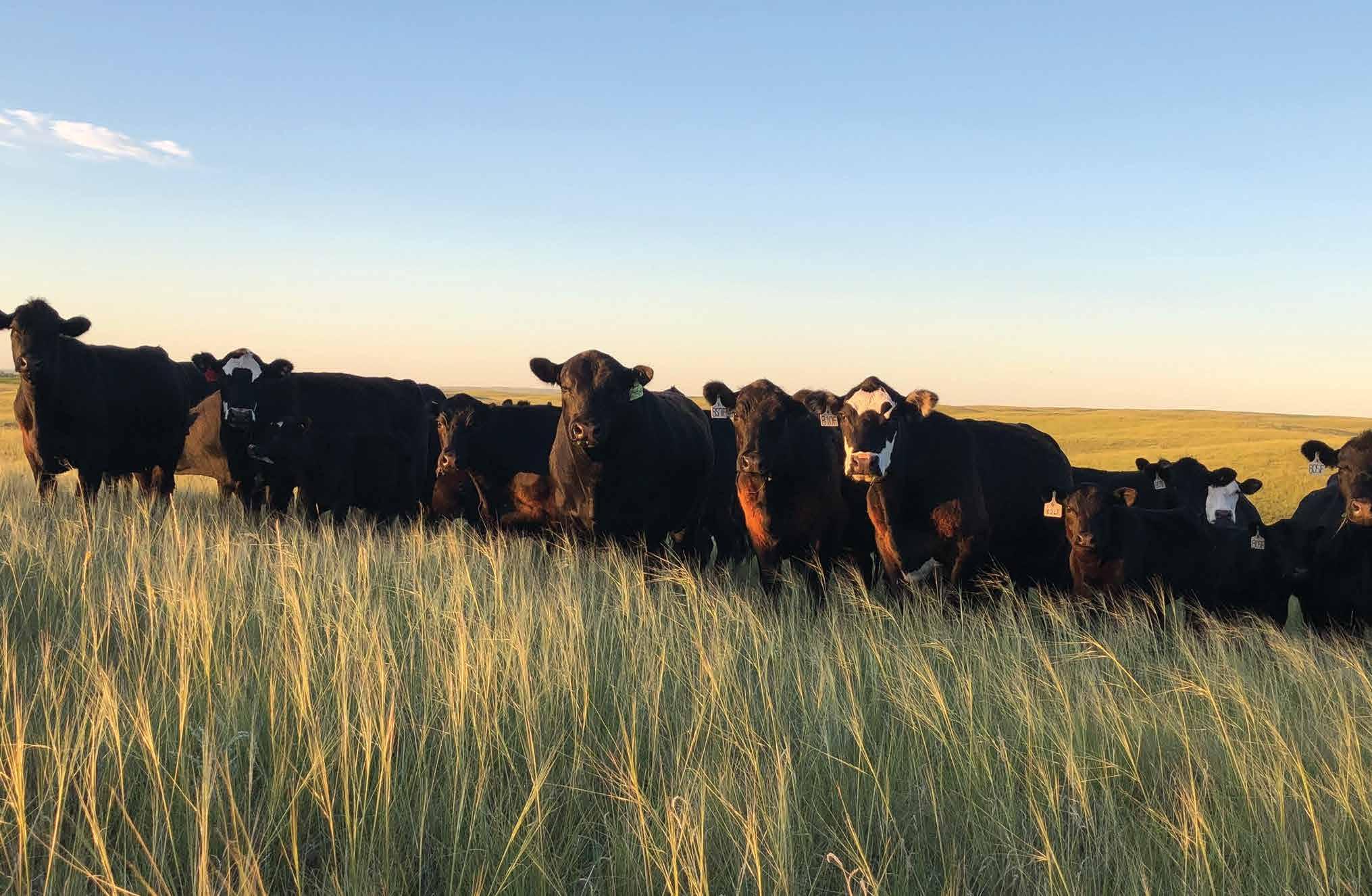
9:00 a.m. Registration and Trade Show
9:30 a.m. Call to Order, Welcome and Introductions
Approval of the Agenda
Minutes from the 2023 Annual General Meeting
President’s Report
2nd Call for Nominations
2nd Call for Resolutions
10:00 a.m. Marshals Service Update
Rob Cameron – Chief Marshal, Saskatchewan Marshals Service
10:30 a.m. Networking Break and Trade Show
11:00 a.m. Financial Report
Zone Chair Ratifications
Final Call for Resolutions
11:30 a.m. Saskatchewan Stock Growers Foundation AGM
12:00 p.m. Lunch and Trade Show
1:00 p.m. SSGF Update
Brant Kirychuk – General Manager, Saskatchewan Stock Growers Foundation
1:45 p.m. Networking Break and Trade Show
2:15 p.m. Irrigation Expansion in Saskatchewan
Water Security Agency
2:45 p.m. Voting Procedures/Results & Resolutions
Other Business
Final call for Nominations and Elections
Closing remarks
Adjournment
Registration fees do not include a ccommodation. We have a block of rooms reserved at the Home Inn & Suites.- 1411 Battleford Trail E, Swift Current. To reserve a room call 306.778.7788.
Room Rate: $114/night plus taxes for all room types
Block Name: SSGA AGM Deadline for booking this room rate is May 26, 2024.

Western Litho Printers Gold
Livestock & Forage Centre of Excellence
Livestock & Forage Centre of Excellence
Vetoquinol Canada Inc.
Vetoquinol Canada Inc.
Young’s Equipment
Young’s Equipment
5 Ranch
Saskatchewan Bison Association
Saskatchewan Bison Association
Elanco Animal Health
Elanco Animal Health
Great Western Brewing Company Armstrong Implements
Great Western Brewing Company
Biological Carbon Canada
Biological Carbon Canada
Boehringer Ingelheim Canada
Boehringer Ingelheim Canada Ducks Unlimited Canada
Saskatchewan Stock Growers Foundation
Saskatchewan Stock Growers Foundation
Young’s Equipment
Sponsors confirmed as of April 30th
*Include additional name(s) on this form for name tag(s) REGISTRATION (includes GST)
Total registration and ticket fees: ___________
Name:
Organization/Ranch Name:
Mailing Address: City: Province: Postal Code: Phone: Fax:
Email:
Total Registration Fees Enclosed:
Payment must accompany registration. Registration form must be received on or before May 31, 2024 to qualify for early-bird rates. Cancellations received prior to May 31 will be refunded less a $50 administration fee. Cancellations received on May 31 or later will not be refunded. Make cheques payable to “Saskatchewan Stock Growers Association” and send to PO Box 4752, Regina, SK S4P 3Y4. Registrations with credit card payment may be faxed to (306) 569-8799 or call (306) 757-8523.
Method of Payment (check one):
Expiry Date: __ __ / __
should, so next week, when we put the cows in the training paddock, whenever they’re within a set distance from the boundary we setup for that space, the collar will begin training them to turn around, move back or away.”
By that, Deanne is referring to the Vence’s detailed training procedure, which they have found to be effective in training the cattle.
John explained that when a collared animal crosses a virtual fencing boundary, the collar’s radio frequency transceiver activates and sends a sound cue along with an animal-safe and humane electric pulse to the animal, which helps the animal learn to avoid that stimuli by moving away from that virtual boundary.
He also said, once trained, all of the collared cattle will be turned out to pasture to experience the virtual fencing system boundaries they will be writing and rewriting into the application to support the grazing management plan they have devised to support their operation’s forage and soil health.
Electronic Virtual Fencing cont. from pg. 23 B

The Vence software enables users to draw and redraw virtual fence lines endlessly, to include or exclude specific areas on any landscape, which helps with rotational grazing and protecting habitats for species at risk.
Since the technology can hold up to 16 different virtual fences, and be programmed to move fence lines automatically, we asked the Chuikos if they anticipate moving their fence lines more often.
John replied, “That remains to be seen. Currently, because we want short graze periods and long recovery periods, we try move our animals a lot to minimize overgrazing. With our electric fencing and our planned grazing system, depending on what we were trying to accomplish in that paddock in the past, we have moved our animals as little as once a day or multiple times a day. Once we get comfortable with the tech and see how the cows respond to the virtual fences, we’ll try to move them as much as possible.

“We have to think about animal welfare, battery life, and other things, before we can determine that. Our biggest concern relates to our forestry lease where the cattle tend to stay in the open areas and overgraze it. We want to use the tech to move them around our forestry lease to utilize the grass better, which will improve herd distribution and soil health.”
Before we wrapped the interview, we asked how much data they have collected so far.
John and Deanne said though the first phase of the project is well underway, the preliminary data represents the system checks only. They expect to have an update for us in the fall. First, they need to train all the collared cattle, release them out to pasture, then begin moving the virtual fence lines and the animals in alignment with their grazing management plan.
“We anticipate having a fair amount of data to analyze and report on in October for the November 2024 issue of your magazine,” John said. “We expect a large learning curve, but see the huge potential that this technology could have on our operation.”
University of Kentucky
Martin-Gatton School of Agriculture, Food and Environment
Grazing Methods: Which One Is for You?
https://grazer.ca.uky.edu/grazingmethods-which-one-you
Saskatchewan Ministry of Agriculture
Strategic Field Program
https://www.saskatchewan.ca/ business/agriculture-natural-resources-


and-industry/agribusiness-farmersand-ranchers/sustainable-canadianagricultural-partnership/programs-forresearch/strategic-field-program
Merck Animal Health Vence
https://www.merck-animal-health-usa. com/species/cattle/vence
Agriculture and Agri-Food Canada Current Drought Conditions https://agriculture.canada.ca/en/ agricultural-production/weather/ canadian-drought-monitor/currentdrought-conditions

Western Canadian ranchers will face significant challenges in the coming years, as implementing sustainability and climate standards in Canada moves one step closer to reality.
If you are a rancher, now is the time for you to voice your opinion on Canada’s sustainability and climate-related standards. On March 13th, Canadian Sustainability Standards Board (CSSB) released draft sustainability and climaterelated financial disclosures for public comment. The consultation period will conclude on June 10th.
These standards will be the foundation for other rules over the next few years; therefore, it is important to communicate the potential trickle-down effects and implications of these standards on your cattle or livestock operations to the
“standards-setters.”
There are supporters of the standards who downplay the potential impact on livestock producers by insisting that the standards are only meant for publicly-listed companies and will just be voluntary. Importantly, CSSB notes that non-publicly listed entities will likely have to comply with elements of the standards because they are part of a larger company’s supply chain. The disclosure standards will be voluntary until mandated by regulators like Canadian Securities Administrators (CSA).
Regulators will also decide what size of company will need to apply the standards and if they will be mandatory. Indeed, the chair of the CSA has said it “would consider the final CSSB standards . . . for incorporation into a CSA rule, to
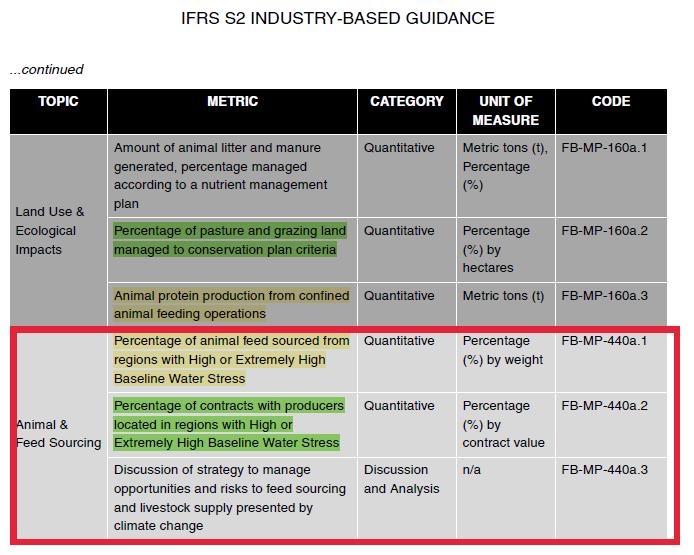

become mandatory under Canadian securities legislation.”
Since these disclosure standards are likely to be mandatory in the near future, which elements will non-publicly listed companies have to comply with?
There are two elements that will apply to and affect Western Canadian stock growers: mandatory Scope-3 emissions reporting and declaration of livestock from areas of “high to extreme-high water stress.”
Since the standards are meant for investors, banks and insurance companies, large meat processing companies and feeders will be the first businesses required in the cattle and stock grower supply chain to report under these new standards. These processors and feeders will need to disclose not just emissions directly resulting from their own operations, but also indirect Scope-3 emissions across their entire supply chain, including the emissions embedded in the livestock they purchase.
This means that when a company purchases animals from a stock grower, it will request the total greenhouse gas emissions for each animal. Scope-3 emissions accounting includes emissions from the animal feed, all farm inputs related to the livestock, and transportation of the animals. It can also include emissions after the sale, such as
feeding and processing, transport of the final product, packaging, refrigeration, disposal of packaging, as well as preparation and disposal of the end product—all of which must be quantified or estimated.
Since the rules only require absolute emissions, there is no mechanism to account for any carbon sequestration achieved in a rancher’s operations. Therefore, stock growers will experience a cascading or rippling effect from these regulations flowing down the supply chain.
At the same time, the fact that all others in the supply chain will likely have to report their Scope-3 emissions too, is troubling. There will be a lot of duplication and multiple counting of emissions, creating a distortion of the actual emissions profile of the industry and Canada. Other jurisdictions, like United States, are encouraging but not mandating Scope-3 emissions. Therefore, Scope-3 emissions reporting should not be mandatory in the Canadian standards.
In addition to mandatory Scope-3 emissions accounting, through the required use of industry-based guidance, there is the obligation for baseline water stress data using the World Resources Institute Aqueduct tool. The industry guidance for the five industries in the food and beverage sector focuses on water usage and whether cattle, inputs and feed are sourced from areas of “high or extremely high baseline water stress.”
One might expect companies to report on an operation’s compliance with local regulations, but the industry-based guidance only asks the binary question: Is the “percentage of contracts with producers located in regions with High or Extremely High Baseline Water Stress?”
The reason is likely because the Aqueduct tool was never designed for this purpose —the World Resources Institute refers to it as a “prioritization tool and should be augmented by local and regional deep dives.”
Yet that local and regional information
is not required. This matters for Western Canadian cattle producers because large parts of Southern Manitoba, Saskatchewan and Alberta fall into water-stressed areas; Quebec and Ontario do not.
The binary choice lacks context and adequate decision-useful information for investors that may undermine investor decision-making. A rancher’s livestock— because of the Aqueduct tool—could very well be disqualified from purchase by large processors or purchasers that are publicly listed. An absolute number without context is not useful. Therefore, this type of water-stress information should not be mandatory.
While these standards were being developed, the United States Securities and Exchange Commission (SEC) drafted its own climate rules. They were finally released on March 6th and were immediately litigated.
The SEC has stayed the rules indefinitely until the court cases have been settled. Even if the American rules are upheld, they do not require Scope-3 emissions accounting; climate scenario analysis is voluntary; and there is no mandatory waterrisk assessment.
The standards being considered in Canada, are so significantly different from the American ones, that once mandatory, Canadian operations will be put at a competitive disadvantage in accessing the American market.
There is still time to express your concerns to CSSB before the standards are implemented: the deadline is June 10, 2024
It is important for the subsequent rule making by the CSA that your points are made; so, they are aware of how this could affect you. It is also important to raise your concerns with the provincial administrators and the provincial ministers of agriculture, finance and justice.
To learn more about the proposals and participate in the public consultations, please visit: www.frascanada.ca/en/ sustainability/projects/adoption-csds1csds2/media-release-cssb-publicconsultation
If you would like help in making a comment or require more information, please contact me at info@esg2insight com or scan the QR code.
B


• GRASSFED: “True North Foods is partnered with A&W Canada to supply Canadian grassfed beef for A&W’s grassfed burger program.
• SERVICES: Whether you are a specialty producer looking to get your product to a specific market or distributor, or if you are producing commodity livestock for sale, we can partner with you. From our multi-species capabilities to our ability to handle smaller volumes, we offer excellent capabilities for producers in the Canadian Prairies to maximize their profitability.
• FACILITY: We have a state-of-the-art facility to allow us to reach markets across Canada, the USA, and beyond. We understand producer’s needs, their care for their animals, and their honest, straightforward nature. Call us to hear how we can work together to get your product to market.


NOTE: If you have any information related to these or any missing livestock file, please contact
or RCMP Livestock Investigator Cpl. Owen Third at 306-537-9448.



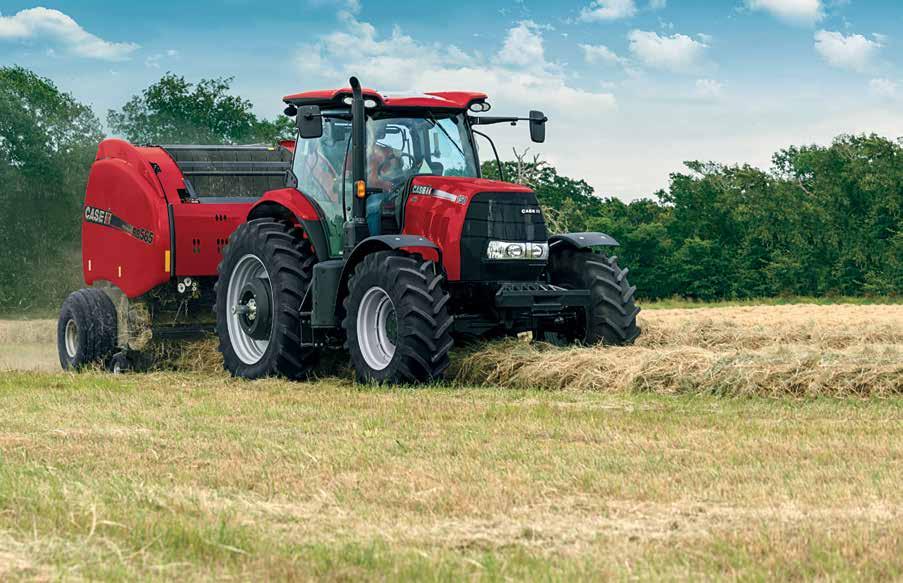

Between now and December 31st, 2024 active Members of the SSGA will receive a $1,250 Young’s Equipment Gift Card for Parts and/ or Service at any Young’s Equipment location with the purchase of any of the following new units:
- Case IH MFD Loader Tractor (60-185 HP)
- Case IH RB565 Round Baler
- NDE Vertical Mixer
- Highline BP60 series Bale Pro®
In addition to that, we will donate $250 per unit sold to the Saskatchewan Stock Growers Association to support their formidable cause.
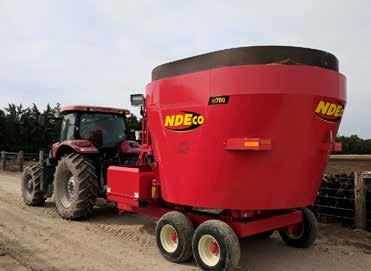




 Chief Executive Officer Jason Pollock Livestock Services of Saskatchewan
Chief Executive Officer Jason Pollock Livestock Services of Saskatchewan
I have heard it said more than once that the only thing constant is change. For anyone that has been in this business any length of time, their ability to adapt to the constant change happening around them, and in their business, has been key to survival.
I have a few vintage photographs hanging on my wall from the annual roundup by the Cypress Hills Stockmen’s Association circa 1970s. The most notable difference, besides the high-crowned, tight-brimmed cowboy hats, is the predominant type and breed of cattle in the pictures. Two-year-old Herefords, rivaling the size of the horses, dominate the herd. A splattering of black and white animals makes up the rest.
Today, the situation is reversed, with those feather-necked beauties in the minority during the annual roundup. It’s taken a few decades to transition to this, and that seems to be the way change occurs best in the cattle business—over time—with small, but calculated moves towards greater efficiency, profitability or some other goal that improves or adapts the business to the environment.
In the last article, I indicated that Livestock Services of Saskatchewan (LSS) is on the
path towards a digital manifest that has many more features and much more functionality than a paper one. Due to the nature of the federal and provincial legislation, current and pending, the regulatory burden on producers is increasing.
For several decades, the provincial requirements to market and move cattle have been managed by inspection services, which Saskatchewan producers are used to, complete with paper manifests and permits.
Since February 2022, all transporters of livestock have been required to comply with the federal humane transport requirements (more than 35 fields of information), and transfer of care documentation (complete with signatures). Soon, movements from one premises identification to another will need to be reported to the federal database to support livestock traceability.
If you are like me, the last thing I want to worry about is a briefcase full of paper on shipping day.
Enter MyLivestock .
This new tool, still in its infancy, can already be used for non-inspected movement in Saskatchewan. It is currently limited to non-inspected movement as the inspection process is complex and affects commerce. As we move into using the MyLivestock tool for inspected movement transactions, we will proceed with caution.
MyLivestock is now live and can be accessed at MyLivestock.ca. Registration is free and includes a three-month free premium trial for livestock operators. The trial period does not begin until you complete your first movement; so, there is no need to delay in registering.
Livestock carriers/transporters can also register for free, but will need to contact an administrator for onboarding/ subscription (details at MyLivestock.ca). Transporters will have access to many features that are tailored to the trucking industry. We have worked with some of the larger cattle hauling businesses to develop the initial version and will be continually refining it based on feedback and use by all sectors of the industry.
• Movement Events and History for Cattle, Horse, and Bison
• Canadian Cattle Identification Agency (CCIA) Animal Movement Reporting
• Humane Transport Records (including Transfer of Care)
• Non-Inspected Saskatchewan Manifests
• SK My Brands (read-only)
• Transport Module for Livestock Carriers
• Full User Management for Organizations
• Real-Time Access to Movement Information
• Saving and Autofill of Repetitive Data Entry Fields
• Easy to Use Desktop and Mobile User Interface
• Movement Events and History for Additional Livestock Species
• Inspected/Commercial Saskatchewan Manifests
• Saskatchewan Brand Renewals
• My Tags Module including, radio frequency identification (RFID) scanning options
• Horse/Show Animal Module
• Android and iOS App to allow for use in low-service areas and enhanced notifications
This all sounds rather foreign and futuristic for many producers, and that is okay. It is key to remember that we are on a path. Each step on the path takes us closer to where we are going, and that destination is determined by industry.
LSS is owned and managed by the five main livestock groups in Saskatchewan, and it takes its direction from these groups. We are not in a position today to force anyone to use a tool like MyLivestock, and are very clear that the future will likely always have a place for paper.
As our business moves further and further online and into the cloud, LSS is thinking forward and looking ahead to provide value to its stakeholders. From tried-andtrue inspection skills to leading-edge digital record solutions, we are focused on serving our industry to the best of our ability. It won’t happen overnight, and it shouldn’t. Often, the best improvements are made in a looping feedback process with goal adjustments based on results.
I have been lurking around bull sales the past several weeks trying to get a few bought up that will improve certain traits in our cows. This is just one example of the slow transitional change that our industry thrives on. I can’t improve my entire herd overnight; the economics just won’t support it.
I need to think about the genetics that will improve certain traits I feel are going to benefit my operation the most in the long term, and then try to fill that order when I raise my hand to the auctioneer. I know that to improve my mother cow’s udder and ability to produce milk, I need to start that process years in advance of those females making up most of my herd to influence my profitability.
It takes a long time to implement changes that work. This is the path that LSS is on, and our goal is to provide a digital tool on a mobile device that will be preferred over paper manifests for those that wish to use it. We want this to work for producers. We want to reduce the burden of
legislated paperwork and improve decision-making ability through information and record management solutions designed by industry for industry.
This won’t happen overnight, and it doesn’t have to. Change occurs because we are constantly adapting to the environment around us not because what we are currently doing is wrong. LSS will take small, calculated steps that provide value, support producers, and over time get us to a place where we may look back at paper manifests with the same nostalgia you might feel looking at the vintage photos on my wall. B


Another season, another set of challenges to deal with! From the prospect of a drought to highly pathogenic avian influenza (HPAI), the capital-gains tax increase and the Canadian Sustainability Standards Board (CSSB) First Canadian Sustainability Disclosure Standards process. These issues affect us all in one way or another, and will have a lasting
impact in many ways.
I’m tired of drought as a topic, as most everyone else is I’m sure, and I really don’t want to dwell on the topic at this point in time. It’s early in the growing season and as I’m writing this report, there’s rain in the forecast. Mind you, it’s five days out and the track record for forecasting rain leaves a lot to be desired.
Recently, we had the opportunity to meet with Saskatchewan Minister of Agriculture David Marit and discuss the values of the various business risk management (BRM) programs available to ranchers and farmers. The BRM environment is ever-changing and evolving in response to industry needs, affordability for producers, and the underwriters of the program.
After last year’s feed program, it was made clear to Saskatchewan Stock Growers
Association (SSGA), that there is very little appetite for the federal government to participate again in any kind of an ad-hoc AgriRecovery program. So, be warned that we may have to go it alone if we experience another year of below-average production and hard-times. Let’s hope the five-day rain forecast comes through!
The unusual manifestation of HPAI in multiple U.S. dairy herds has caused problems and reason for concern. As expected, markets reacted in a negative way to the outbreak, which is unsettling the industry, resulting in cattle and milk prices taking a hit. So far, the United States Department of Agriculture (USDA) is tracking and dealing with the identified herds in multiple U.S. states to limit the spread.
There is little to no risk for consumers of beef and/or milk, and the negative market response is an unnecessary

pull back driven by trader panic. The headlines in the media are instilling fear. As an example, “Bird flu risk to humans an enormous concern” is part of a statement released by the World Health Organization. So far, no case of HPAI has been identified in a beef herd in Canada or United States.
Changes to the capital-gains tax structure will impact people invested in agriculture. I’m not in any way prepared to comment on what the implications may be, everyone’s situation is unique and tax strategies need to be prepared by professionals. Make sure to consult with your accountant in regard to these changes.
The formation of Canadian Sustainability Standards Board appears to be a progressive move to provide support for “sustainability” in an ever-changing world. When you scratch the surface and dig deeper, CSSB will drive change in a way that won’t be good for agriculture—especially anyone in the animal ag industry.
In their own words: “the CSSB works to advance the adoption of sustainability disclosure standards in Canada. The CSSB develops Canadian Sustainability Disclosure Standards (CSDS) that align with the global baseline standards developed by the International Sustainability Standards Board (ISSB)— but with modifications to serve the Canadian public interest. CSSB is also a member of the Sustainability Standards Advisory Forum, which supports these mutual objectives.”
I am alarmed at the invasive nature of their proposal. They serve “society and natural environment, public accountable entities, users of sustainability-related information (investors, creditors, analysts and bond raters), governments (federal, provincial, municipal and indigenous), regulators plus other interested and affected parties.”
They are now proposing their First Canadian Sustainability Disclosure Standards, which by its own admission is the first. If we think we are living in a world of rules and regulations now, just wait until they implement and impose their accounting system on all of us.
The CSSB was established by the federal government as an independent entity; so, they are not accountable to anyone, directly. This organization literally scares me, and I strongly encourage everyone to provide feedback on their First Canadian Sustainability Disclosure Standards while it is open for public consultation.
If fully implemented, an accounting system like this will have total control over commerce, industry and productivity. Saskatchewan Stock Growers Association will be providing feedback and I encourage everyone to check out the Financial Reporting and Assurance Standards Canada website at www.frascanada.ca to provide your feedback as well.
Thought of the week...
I’ve been thinking about the last line of the Gettysburg Address given by then U.S. President Abraham Lincoln: “that government of the people, by the people, for the people, shall not perish from the earth.” In context, this was about the struggle for democracy and the people that paid the ultimate price in the fight for freedom.
These days we rarely see “government of the people, by the people, for the people.” Today, all too often, we have top-down leadership that continually tells us what’s good for us, a government that seems not at all interested in the plight of the people.
In closing, I would like to invite all livestock producers to attend our 111th Annual General Meeting and Convention in Swift Current from June 9 to 11, 2024. The agenda includes an exceptional slate of speakers and presentations; plus, we will be dealing with the business of the association!
SSGA is a wonderful organization that allows and encourages debate on all the important issues of the day.
Kindest regards,


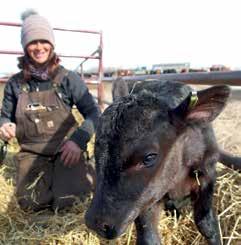
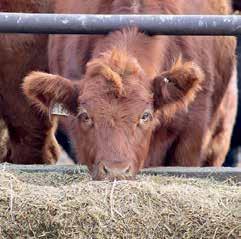 Garner Deobald gdeobald@gmail.com 306-677-7777
Garner Deobald gdeobald@gmail.com 306-677-7777








Thank you to all of our generous donors that helped make the auction an overwhelming success!
Austin’s Saddlery
Barber Motors
Beef Smart
Berglund Ranch Supply
Boothman Private Wealth Management
Brett Young Seeds
Bullseye Feed
Capital GMC Buick Cadillac
Canadian Beef Industry Conference
Cedarlea Farms
CEVA
Charity Booster
Covacc Leather
D&R Prairie Supplies
DLF Pickseed
Dudley & Co Gallagher
Gateway Veterinary Services
Grain Millers Canada
Great Western Brewing Company
Greenhawk Regina
Hat Doctor
Hi-Tec Profiles
Imperial Seed
J5 Bar Mercantile
Jahnke Ranches Ltd
Linthicum Ranch
Marshland Outfitters
Merck Animal Health
Moose Creek Red Angus
Nahachewsky Charolais
Nelson GM
Numzaan Safari
Nutrien
Pearl Snap Photography
Performance Seed
Ponderosa Ag Sales
Pride Seed
Pure Passion Outfitting
Sask Stock Growers Foundation
Saskatchewan Wildlife Federation
Saskatoon Media Group – CJWW
SK Sheep Development Board
Solvet
South Country Equipment
South Shadow Angus
STOCKBOSS Energyfree Livestock Waterers
T4 Jean
Titan Livestock
VBP+
Viterra
Weiss Leather & Bear Creek Angus
Western Cycle
Western Litho Printers
Windy Willows Farm
Young’s Equipment
Zoetis
Thank you to our media partners
620 CKRM RealAgricultureSaskatoon Media Group

Saskatchewan Prairie Conservation Action Plan
The Ferruginous Hawk (Buteo regalis) is the perfect mascot for the prairies. Its chosen prey is Richardson’s ground squirrels, also referred to as gophers, and a pair of these hawks can kill about 480 ground squirrels in a season to feed their nestlings.
At 63 centimetres (25 inches) from head to tail, and with a wingspan close to 1.5 metres (approximately five feet), the Ferruginous Hawk is the largest hawk in North America. This hawk gets the name “ferruginous” from the rusty colour of the feathers on its back and legs like rusty coloured “chaps” on its legs, like a cowboy. Some Ferruginous Hawks have a reddishchocolate brown belly and back, but this “dark morph” is quite rare. In flight, when viewed from below, its red legs form a dark V-shape against the bird’s bright white belly and tail.
Ferruginous Hawks arrive in the Canadian Prairies in early to mid-March. Males arrive first and frequently return to the general area where they were raised. Pairs are often monogamous, and successful pairs that have fledged chicks in the previous year will use the same nest year after year. If the previous year’s nest was unsuccessful, they are likely to search for a new nest or an entirely new territory with a suitable ground squirrel population as prey.
Ferruginous Hawks prefer to nest in open areas, such as native grasslands with only a few scattered trees or shrubs, and ground squirrel populations sufficient to feed their young. They choose to build their nests in isolated trees or other elevated structures, such as a cliff face or rock outcrop. As these birds have evolved on the prairies, they may also use a highly built-up nest directly on the ground. Both adults contribute to building the nest, using sticks, roots, shrubs, shredded bark, dead grass, and cow dung. In the past, or in areas with bison, they also use bison hair and bones in their nests.
Ferruginous Hawks typically lay two to four eggs in April and May, but clutch sizes can range from one to eight eggs. The female, which is larger in body size than the male, will incubate the eggs in the nest for 30 days, while the male feeds her. After hatching, the young remain in the nest for six to eight weeks as they grow and molt into their juvenile plumage. The chicks are dependent on the parents for food, even after they learn to fly.

From each stage of development, young Ferruginous Hawks may be preyed upon by owls, crows, ravens, racoons, badgers, bobcats, foxes and coyotes. Also, repeated or intense disturbance from humans early in the nesting period can affect young chicks, which are lightly-feathered and unable to regulate their body temperature, effectively. As Ferruginous Hawks tend to select nest locations with minimal cover, female hawks need to provide shade to her nestlings. If human activity repeatedly disturbs the female, flushing her from the nest, the young birds may experience heat stress and perish.
Ferruginous Hawks hunt throughout the day using a variety of methods. In grasslands with short grass and high visibility, they will sometimes hunt standing on the ground and have been observed to walk, hop and run after their prey before striking. Ferruginous Hawks will also scan for prey from a nearby perch, or search while flying.
In Canada, 85 to 95 per cent of Ferruginous Hawks’ diet consists of ground squirrels. As mentioned, while raising young, one family of these hawks can consume an average of 480 ground squirrels in a season. If ground squirrels become scarce, they might choose other prey, like jackrabbits and smaller mammals, reptiles, insects and birds.
Ferruginous Hawks leave the Canadian Prairies in September or October to return to grasslands of the southern United States and Mexico for the winter. On wintering grounds in prairie dog colonies where their prey exists in high densities, Ferruginous Hawks will sometimes inadvertently hunt in groups, flapping and hopping in aggressive displays that often draw more Ferruginous Hawks.
Ferruginous Hawks can live 20 years or more. Despite being long-lived, adults have an annual survival rate estimated to be 0.7, meaning each year an adult Ferruginous Hawk has a 70-per-cent chance of surviving the year. Predation of adult Ferruginous Hawks may occur by other large-bodied raptors such as golden eagles. However, adult mortality is more often caused by collisions with vehicles, electrocution on power lines, shooting and pesticide use.
Ferruginous Hawks are listed as a species of special concern in Canada. The population is reduced to a quarter of what it was in the 1800s, before European settlement in Canada. Their range has decreased due to loss and fragmentation of grassland habitat, a lack of nest sites, loss of prey and through disturbance by human activity. However, Breeding Bird Survey data suggests that the population is beginning to rise slightly in Saskatchewan. It has also been suggested
that the population may be able to cope with existing threats, in part, due to recovery efforts.
How can you help?
Installing nest platforms – as nest sites are a limiting factor for breeding pairs, installing artificial nest poles can help increase the number of nesting hawks. The Alberta Conservation Association has a brochure on how to install a successful nest poll at shorturl.at/hiLU5
Keep ranching – like many other species at risk, Ferruginous Hawks can co-exist with ranching practices lacking aggressive gopher eradication and which maintain productive native grassland habitat.
For more information:
COSEWIC Assessment and Status Report on the Ferruginous Hawk Buteo regalis in Canada www.canada.ca/en/environment-climatechange/services/species-risk-public-registry/ cosewic-assessments-status-reports/ferruginoushawk-2021


On March 31, 2024, Creighton conservation o cers received information regarding sh that had been abandoned on Deschambault Lake, located in Northeast Saskatchewan. The sh were partially buried under the complainant's ice shack located northeast of Williams Island. Conservation o cers discovered 12 whole walleye, 4 perch llets and 80 walleye llets. The sh are believed to be abandoned at the location between 9:00pm on March 30 and 8:00am on Mach 31, 2024.



The topic of Conservation Easements can be a sensitive subject for many landowners, but Saskatchewan Stock Growers Foundation (SSGF) is working to change that. The creation of a Term Conservation Easement program can be a tool for landowners to receive a financial payment to keep their native grasslands intact for a defined period of time; and SSGF is the first to introduce Term Conservation Easements, which could easily change the face of grassland conservation not only in Saskatchewan, but across Canada.
A traditional conservation easement is perpetual, or tied to the land title forever. Whereas, a Term Conservation Easement brings flexibility with a defined-term length for the easement to be tied to the land title. Term lengths themselves can range from a minimum of 25 years, all the way up to more than 40 years, if that’s what interests the landowner.
Picking a term length that works for you and your operation is important and will vary for each landowner’s situation. Once the term length has expired on the easement, the landowner then has a choice to either re-negotiate a new term easement or walk away and lift all the restrictions associated with the easement.
Ranching has a long history of
multigenerational involvement. Placing an easement on land can cause hesitation when thinking of the next generation, and how you are potentially tying up the land—one of your most valuable assets. Once you place a perpetual easement on a grassland, every generation of landowner after you must abide by the easement restrictions, yet not receive the financial benefits of having land under easement.
The structure of Term Conservation Easements being re-negotiated can let multiple generations of landowners receive financial incentive to keep their grasslands intact. If you look at the average time a generation will own a parcel of land, by the time a 40-year easement is expiring, the landowner may be looking to sell or transition, and the next generation has the chance to decide whether or not re-negotiating a Term Conservation Easement is in their best interest.
The purpose of Term Conservation Easements is to protect our declining grasslands from cultivation and development while providing financial incentive to do so. The pressure to convert grasslands to cropland is at an all-time high, even given the record prices in the cattle industry over the last year.
While typically, most grasslands that are
left have a lower soil quality, if they even have a chance to grow a crop, they are looked at with the opportunity to cash in on grain commodity prices—further fragmenting the remaining and still declining grasslands in the province.
SSGF prides itself on the collaborative approach with landowners:
• Ensuring that landowners understand all the nuts and bolts of the easement, how the restrictions may or may not affect them, and how it impacts their operation on a day-to-day level; and
• Working to find a Term Conservation Easement that works for the landowner, and fits into SSGF’s goals in regards to protecting native grasslands in Saskatchewan.
Term Conservation Easements can be a way for a landowner to work with a local conservation agency and not be lockedin, indefinitely. Saskatchewan Stock Growers Foundation is working to protect the grasslands of Saskatchewan with the help of conservation-minded individuals.

Term Conservation Easements are one of the tools we can use to conserve the remaining grasslands.
Please visit www.ssfg.ca to learn more.








































THE EXECUTIVE
Garner Deobald President Hodgeville, SK Phone: 306- 677-7777
Jeff Yorga
1st Vice President Flintoft, SK Phone: 306-531-5717
Kelly Williamson
2nd Vice President Pambrun, SK Phone: 306-582-7774
Chay Anderson Finance Chair Fir Mountain, SK Phone: 306-640-7087
Kelcy Elford Past President Caron, SK Phone: 306-690-5305
Find email contact for the Executive Directors at skstockgrowers.com
DIRECTORS AT LARGE
Chay Anderson, Fir Mountain, SK
Keith Day, Lacadena, SK
Gerry Delorme, Assiniboia, SK
Calvin Gavelin, McCord, SK
Adrienne Hanson, Langbank, SK
Lance Hockley, Yellowgrass, SK
Joe Gilchrist, Maple Creek, SK
Kelly Lightfoot, Assiniboia, SK
Miles McNeil, Alameda, SK
Lee Sexton, Hanley, SK
AFFILIATE
306-640-7087
306-375-2934
306-640-7493
306-478-7748
306-421-8538
306-891-8189
306-662-3986
306-642-8977
306-489-2073
306-544-2660
Chris Williamson, Mankota, SK 306-478-7036
Kelly Williamson, Pambrun, SK
Zone 1 - Henry McCarthy, Wawota, SK
Zone 2 - Karen McKim, Milestone, SK
Zone 3 - Larry Flaig, Assiniboia, SK
306-582-7774
306-739-2205
306-436-4616
306-266-2070
Zone 4 - Brad Howe, Empress, AB 306-661-0409
Zone 5 - Aaron Huber, Lipton, SK 306-331-0097
Zone 6 - Dave McKenzie, Delisle, SK 306-493-8127
Zone 7- Darcy Moen, Kyle, SK 306-962-3944
Zone 12 - Rod Gamble, Pambrun, SK 306-582-2077
ENDOVAC was first presented to me as an immune stimulant, and we started using it on commingled cattle coming from multiple high stress environments to our ranch. I saw a higher immune response in these cattle and started using ENDOVAC on all of our cattle at all five locations. We have a 2,000 head cow/calf operation and 500 head of stockers with ranches in south Florida and south Georgia. Whenever calves go through the chute, they receive a shot of ENDOVAC. We currently run between .5% and 1% mortality on our calves. And on top of all that, with the price, you can’t go wrong.
–Matt Pearce, –Pearce Cattle CompanyENDOVAC-Beef has been a Game Changer for me. I run a good sized cow-calf operation in addition to starting cattle. 100% of my cattle get ENDOVAC-Beef. Since using ENDOVAC we don’t have to treat as many cattle for respiratory, or even other common problems like pinkeye and foot rot. I am getting my Pasteurella and the stimulant that makes the vaccine work better with ENDOVAC-Beef. If everybody knew what I knew, everyone would be using it!
–Brad Haun, –Haun Ranch